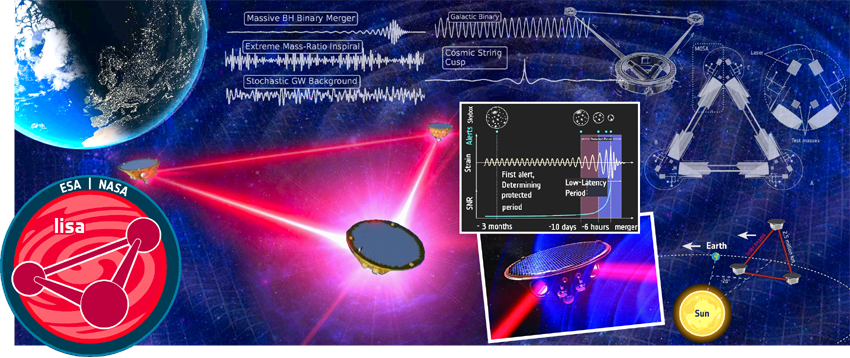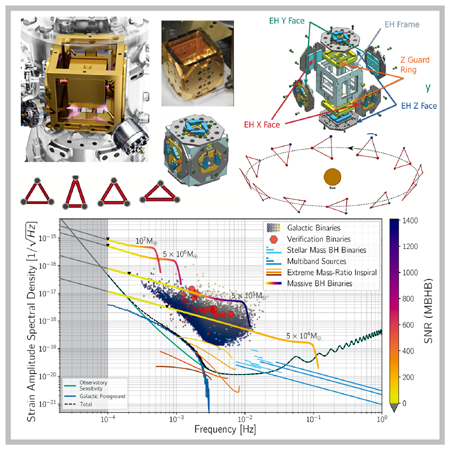
LISA, the first space mission for the detection of gravitational waves.
The Laser Interferometer Space Antenna (LISA) is a space mission for the detection of gravitational waves detection in the space-time, led by the European Space Agency (ESA), with NASA and a international consortium collaborations. LISA will look for gravitational waves with frequencies from less than 10^-4 Hz to more than 10^-1 Hz (time scales from a few seconds to several hours). This frequency range will allow to study the formation and evolution of compact binary star systems in our Galaxy, the origin, growth and mergers of massive and supermassive black holes at the center of other galaxies, to study the fundamental nature of gravity and black holes, massive and dense star clusters, binary inspiral systems with extreme mass ratios, stochastic gravitational waves as remnant of the early Universe and its expansion rate.
LISA was adopted by ESA on January 2024, with launch around 2035. It consists of 3 space probes placed at the vertexes of a triangular formation of about 2.5 million km separation side, a formation that during its orbit tracks that of the Earth, monitoring the entire sky. Each of the three satellites contains two telescopes, two lasers and two test masses (gold/platinum cubes of about 2 kg), arranged in two optical arrays pointed toward the other two probes, forming Michelson interferometers centered on one of the probes, with test masses defining the arms’ ends.
A key technology for LISA is the realization of test masses in a, nearly perfect, free fall condition. The 2016-17 LISA-Pathfinder ESA mission successfully tested this technology (residual forces reduced to femto-Newton level over Hertz^1/2). Considering residual noise there are spurious electrostatic forces, produced by cosmic rays, that build-up charge on the test masses. The masses must hence be discharged with no contact, to leave this system unaffected. 
Since 2018, the LISA group of the INFN Rome ToV Section worked on development and testing of a electronic system for optimal electrostatic charge management, enabling the discharge of the test masses, via photoelectric effect and illumination with UV LED light (250nm). This was done in collaboration with groups from TIFPA and Trento and Florida Universities.
The group of our Section is contributing also to characterization of the optical paths from the UV sources to the test masses. From 2024, the Section’s group is responsible for the avionics development of LISA’s Gravitational Reference Sensor, under contract with ASI, and contributes, with a coordination role, to the low-latency data analysis pipeline.



















































































































